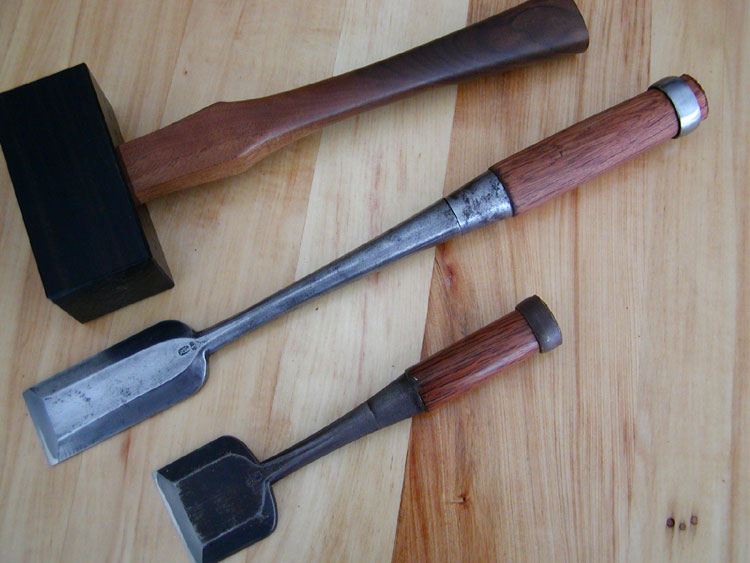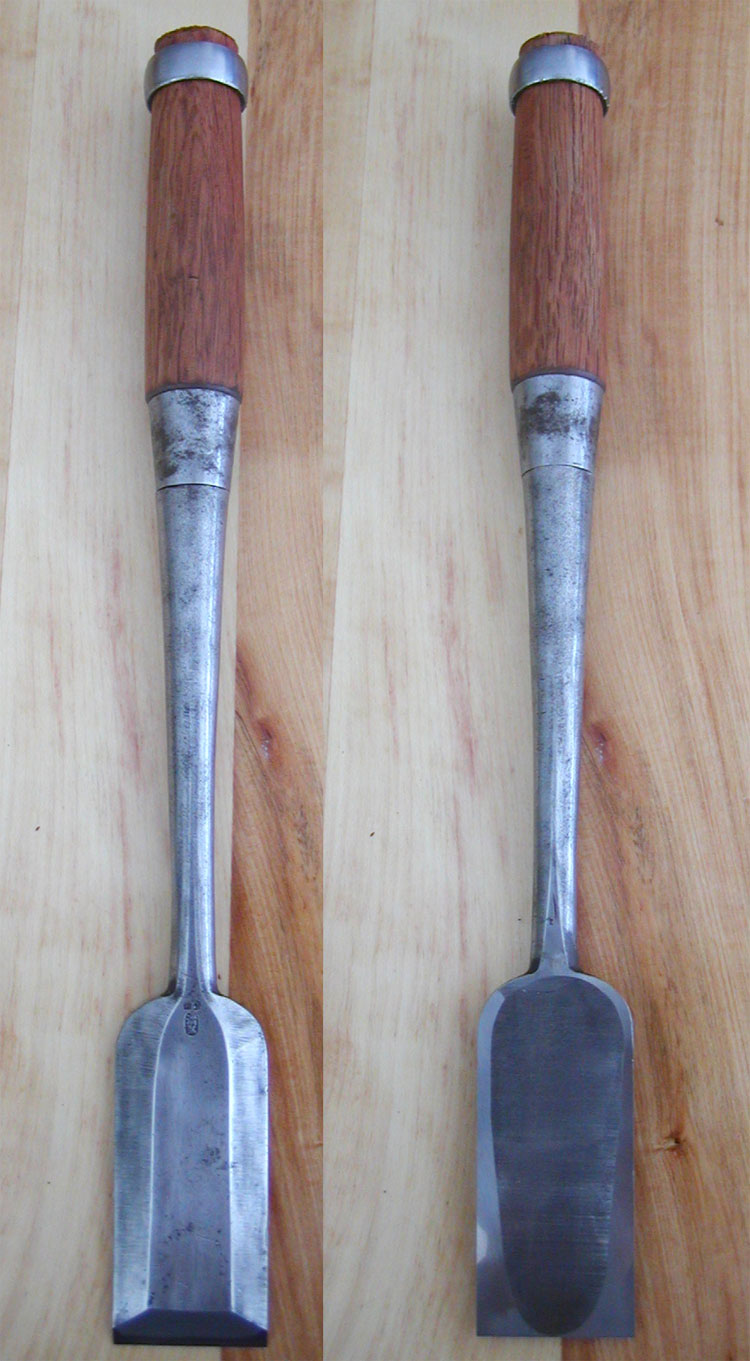| Home > Chisels > Kiyohiro Anaya |
|
Very old anaya nomi, probably from early Shouwa period (Shouwa starts from 1925). Anaya is a capenter who specialized strictly in making mortice holes for construction materials. A little after the the war there were much new houses built and since there were no machines back then this occupation came into being. Anaya made morice holes in a tremendous speed, day in and day out. Large genno and one anaya chisel (plus extra large bentou = lunch box since it's such a demanding work) were the only things they carried to the site.
Although anaya is not an existing ocupation anymore, many carpenters still uses this tool to make a fine mortice holes. This chisel can be converted into ootsuki nomi as well by replacing the handle to a slick style. The ferrule can be reused in this case.
The steel is most likely White Steel #2. Fairly easy to sharpen, and sharpens to a very keen edge.
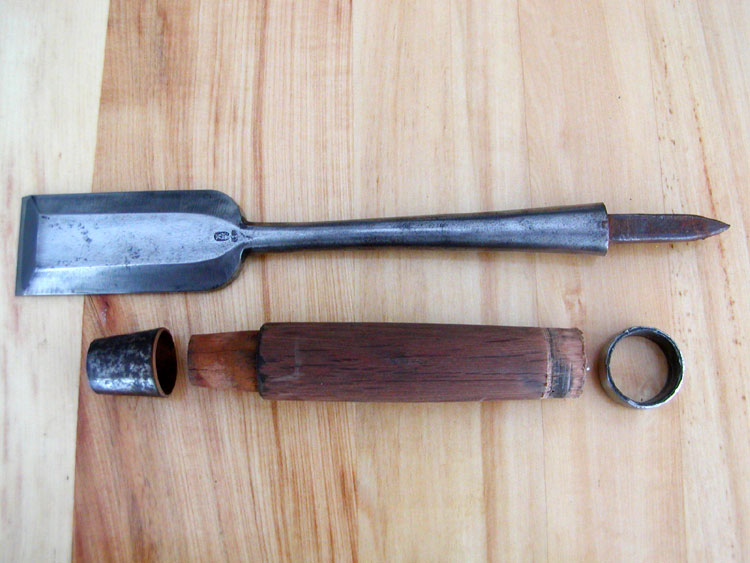
Original state. The body, including the urasuki (back hollow) was in great condition.
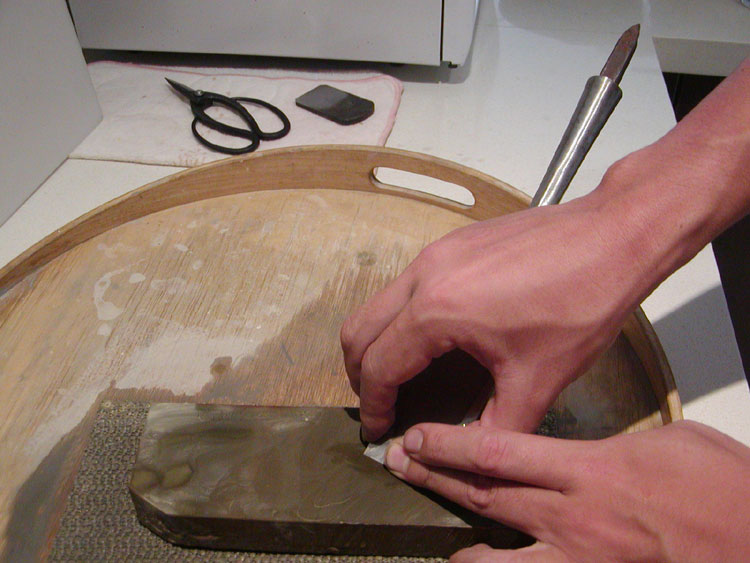
Carefully sharpened by taking off the handle. The bevel is absolutely flat as well as the back.
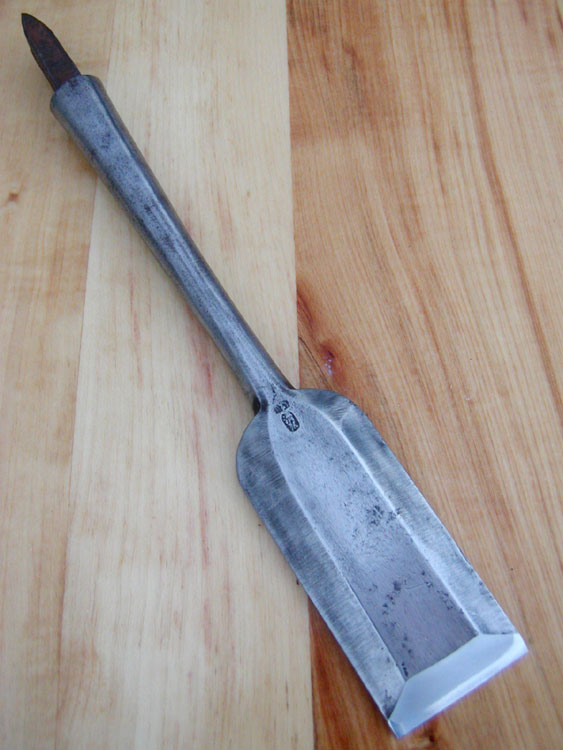
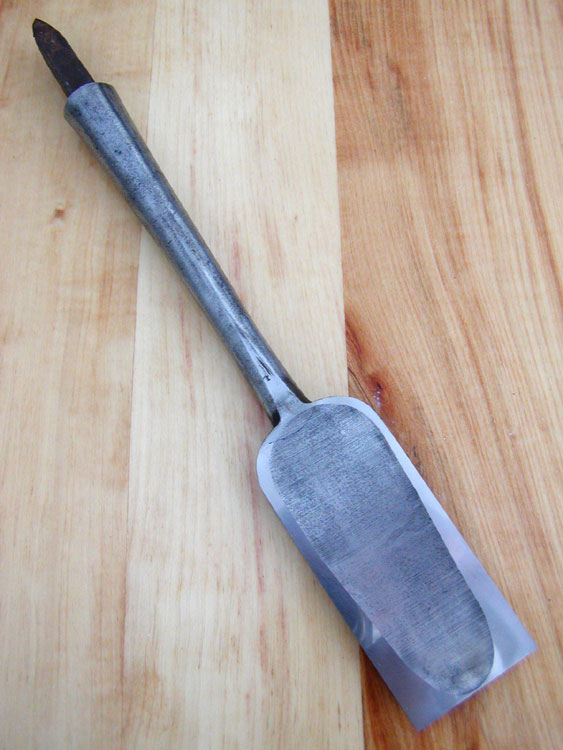
The back is in perfect itoura condition. Itoura (thread back) means the back of the centre tip of the blade is touching the stone by only about the width of a thread. This is when a blade cuts the most. When the back is polised by unskilled user usually the hollow is much smaller and irregular looking. The previous owner was a carpenter, and I can tell how much he loved this tool. Usually carpenter's tools are not as good looking as this one, since they are too busy to sharpen tools properly. Not that they can't but don't have the time. The back is in a textbook condition now.
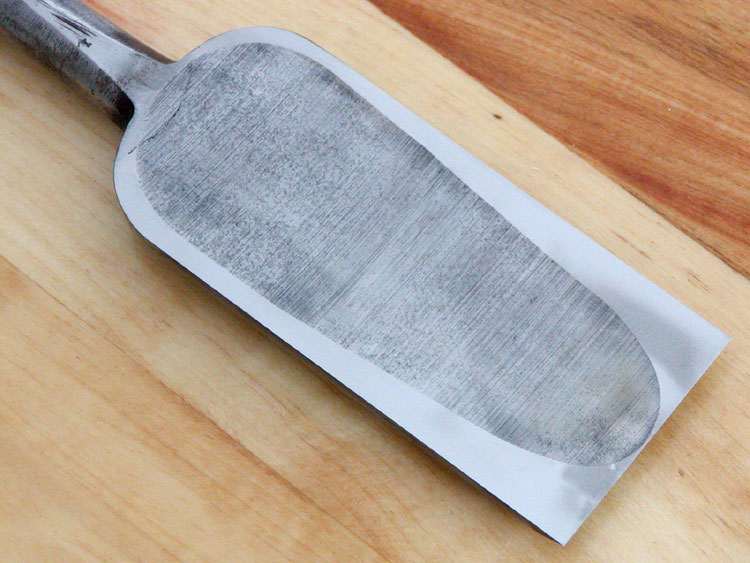
The back of the steel is partially over tempered. You can see the kumo (cloud. where it is darker gray) at the tip. There is no worries regarding the cutting performance. It is a proof of its age. Old tools tend to have minor defects since the blacksmiths didn't have any scientific knowledge regarding metalurgy. In the old days planes and chisels were said to cut better after using a bit, and this is because this over tempered part will be ground off.
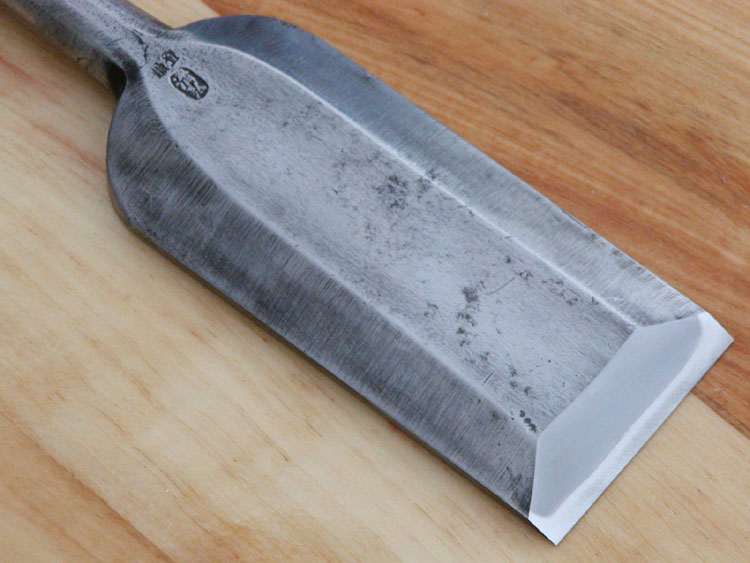
Again there is kumo at the very tip of the blade.
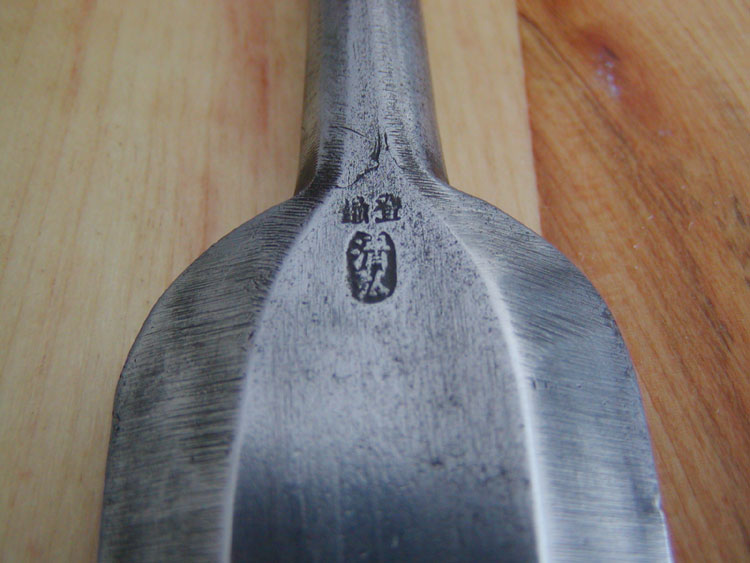
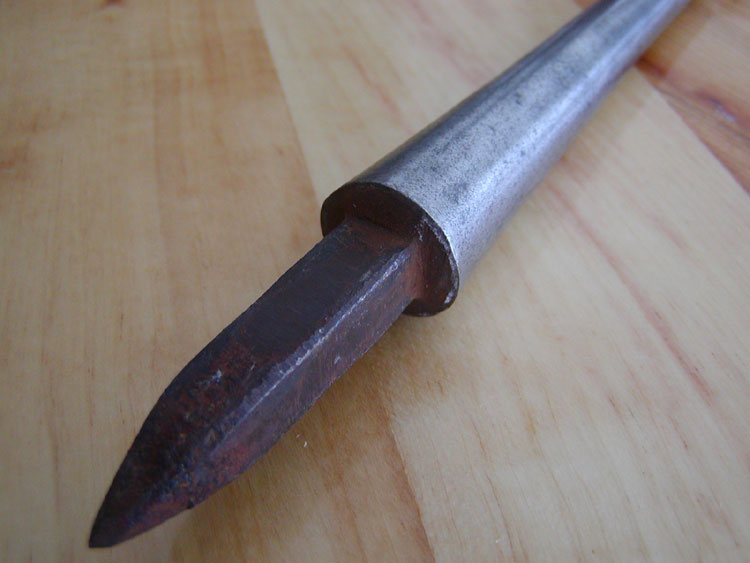
Very neatly shaped hilt. This is where user's cannot see, so sloppy blacksmiths make it not so neatly. This is another proof of this tool being a high quality tool.
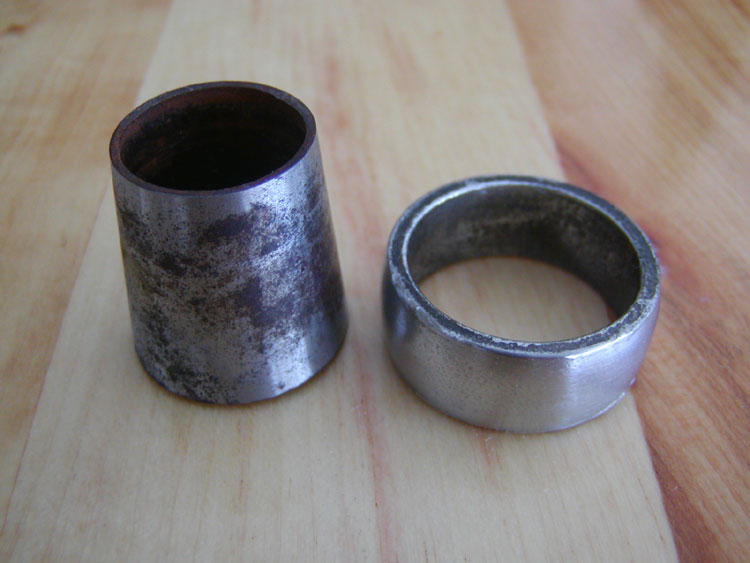
I didn't completely take off the rust to keep the archaic feeling of this tool.
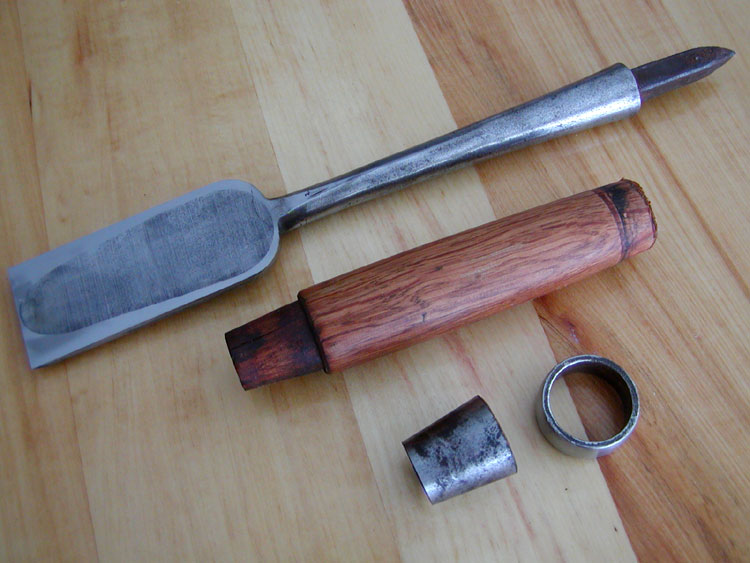
Polished and oiled parts. I enjoy restoring tools as much as using them.
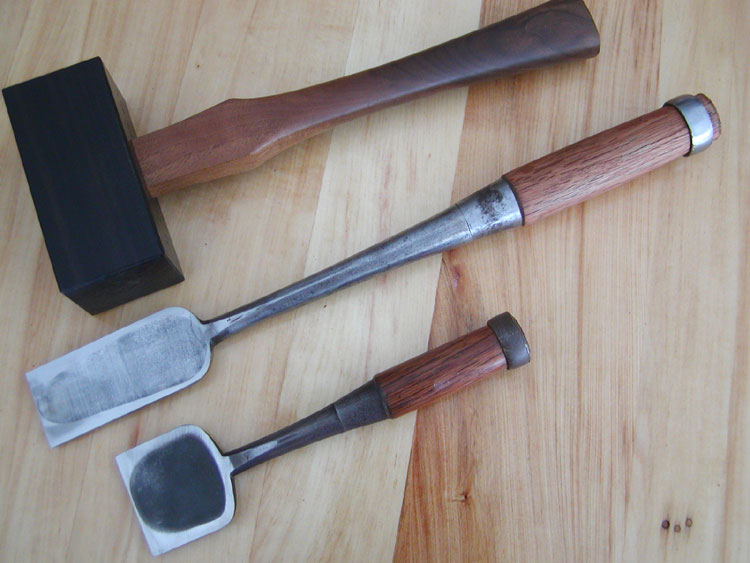
Tools that were used properly by master carpenters. Below is Chu-tataki nomi by Kiyotada. Top is my handmade 80 monme (300g) mallet.
